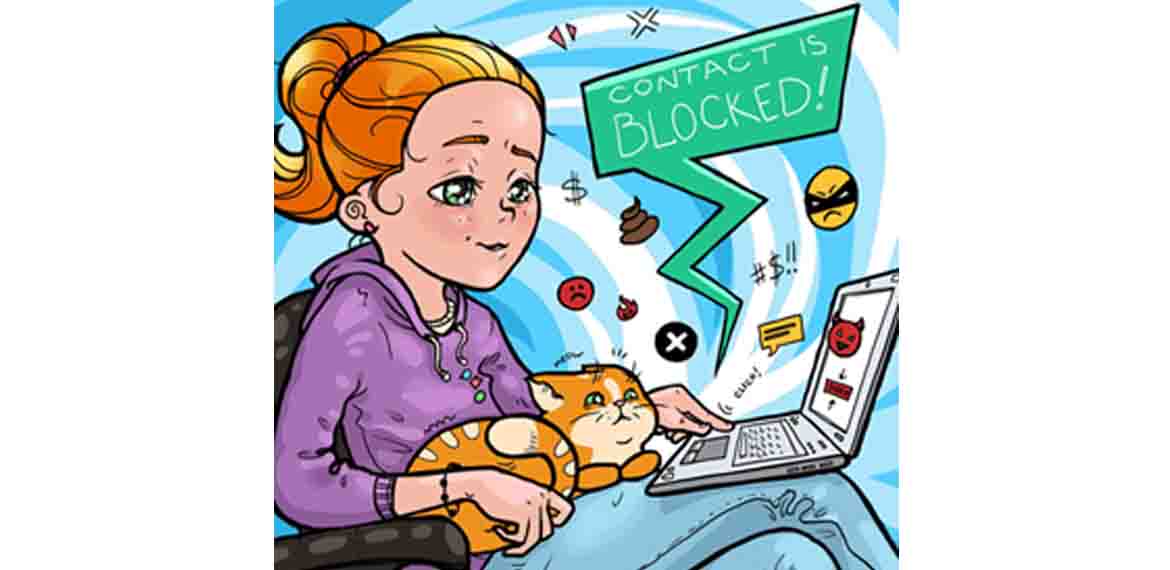Top 10 Ways to Stop Cyberbullying
Bullying has certainly evolved from the days of after-school fistfights or shakedowns for lunch money. In fact, it has kept up with the times and made the move to emails, texting and social media. And while you may have some notion of the damage caused, statistics show that this is a widespread and dangerous problem. Here are top 10 ways to shut down online attackers.
1). Tell Someone
Kids worry that telling an adult will make harassment worse once the bully finds out, or that teachers and parents won’t be able to do anything to stop the abuse. It’s critical for you to reach out if you believe your kids are being bullied online. Look for practical ways to address the issue, such as involving school administrators or contacting social media sites directly.
2). Keep Everything
In some cases, bullying crosses the line from aggravation to criminal harassment or threats. If your child is the victim of cyberbullying, make sure to save all posts and messages from the bully by taking screenshots, or photos on your smartphone, in addition to recording the time and date.
3). Don’t Engage
Those observing the attacks must be willing to report problems to friends, family members or teachers, while those being bullied are often better off ignoring the attacks rather than responding.
4). Learn More
It’s crucial as parents to learn everything you can about what your children are doing on the Internet and with their smartphones.
5). Understand the Scope
Many adults believe social media sites are the likely stages for the bullying behaviors, and they’re right. Bullying can occur on Facebook, Twitter and Instagram, or through Snapchat, emails and texts coming directly from bullies. And since these phones never far from teen hands, the harassment can become almost constant. With technology changing so rapidly, it’s important to always monitor your children’s mobile devices and their online behavior to get ahead of any potential threats.
6). Recognize the Signs
A cyberbullied child looks the same as any adolescent—often unwilling to talk about his or her day or disclose personal information. But according to the National Crime Prevention Council (NCPC), you should look for other signs, like a loss of interest in favorite activities, skipped classes, and changes in sleeping or eating habits. While any of these may be indicative of multiple concerns, you might also notice a sudden lack of interest in using the computer—or in the case of a child who is the aggressor, extreme anger if you take his or her phone or computer privileges away.
7). Keep Data Secure
It’s important for you and your teen to be diligent when it comes to posting data online. It’s a good idea to limit the number of personal photos and information your teen posts online. Make sure they know to always keep passwords secure and change them regularly. Bullies have been known to “hijack” victims’ profiles to post rude and offensive comments. Likewise, teens should always set social media profiles to “private” and ignore messages from people they don’t know altogether.
8). Don’t Get Turned Around
As noted by Nobullying.com, some victims do fight back against bullies, and then become bullies themselves. While this may seem like one way to solve the problem, what often happens is a “sort of back-and-forth between victim and aggressor which tends to continue the behavior.” Make sure to educate your teen about being respectful of others’ feelings and privacy online. Tell your child that you understand the impulse to retaliate, but that in the long-term it’s best to not get involved in that way.
9). Stand Together
It’s important to stand together and look for long-term solutions to cyberbullying.
10). Hold Bullies Accountable
Parents should be holding bullies accountable by alerting school officials and the bullies’ parents. Bullies need to understand that their actions have consequences, and everyone deserves to live without fear.
For more advice on protecting children on the Internet, visit kids.kaspersky.com. Information about a technical solution to these problems can be found at Kaspersky Safe Kids.












